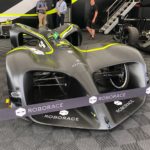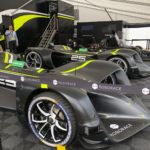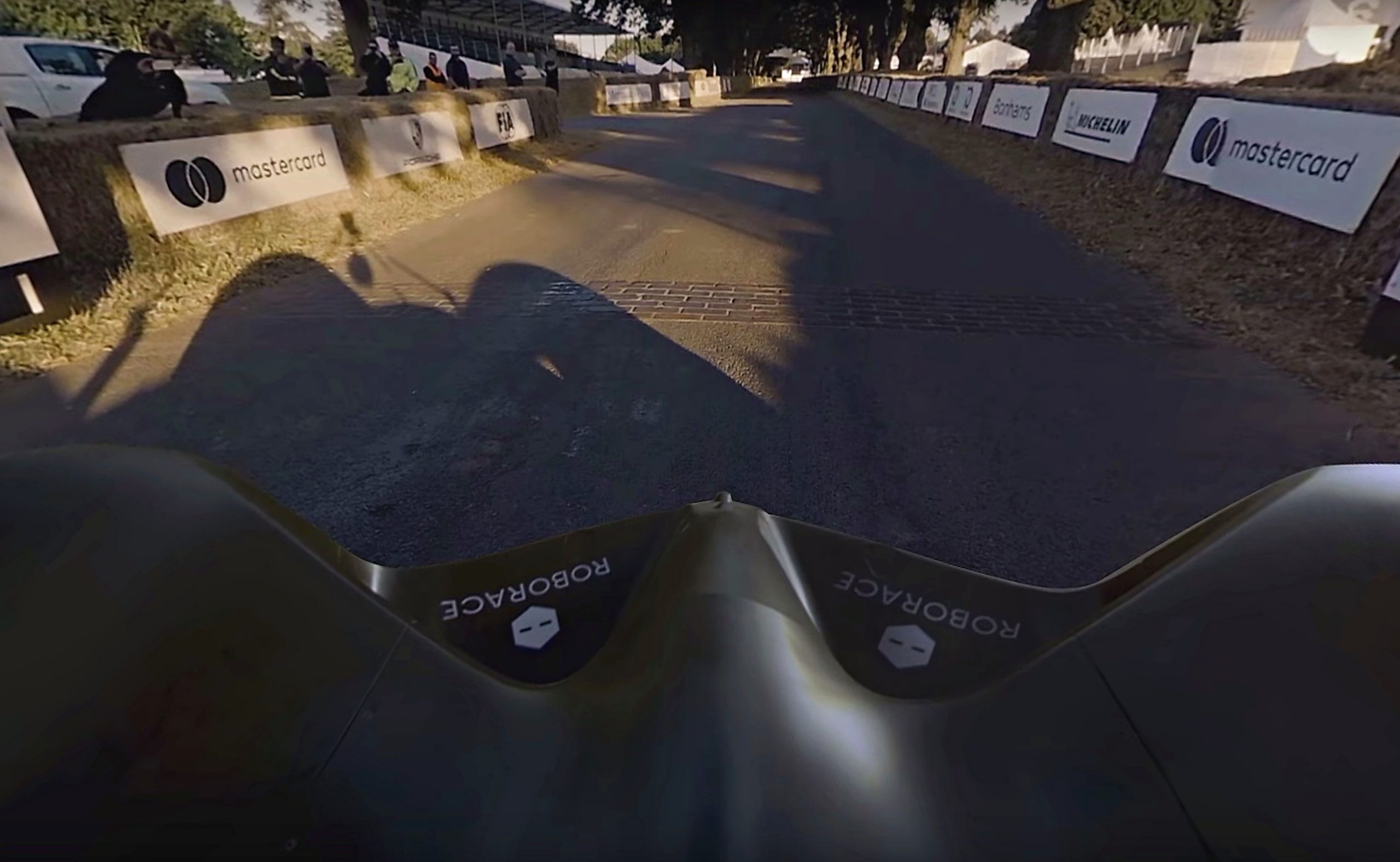
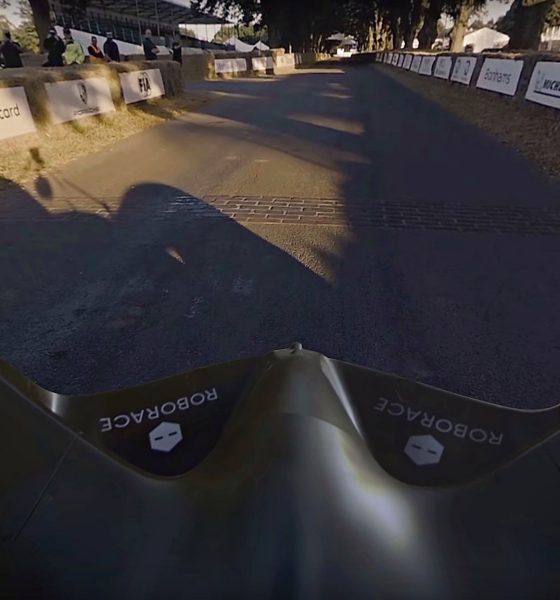
News
Robocar becomes first autonomous race car to complete Goodwood hill climb
The 2018 Goodwood Festival of Speed is off with a bang, with high-profile car manufacturers and cutting-edge vehicles gracing the event. As could be seen in a recently uploaded video online, this year’s Festival of Speed also featured Robocar — an all-electric, fully-autonomous, AI-powered vehicle — successfully completing the event’s traditional hill climb course.
Roborace, the company behind the self-driving racecar, uploaded Robocar’s hill climb run on its official YouTube channel. The vehicle’s run was just a test session during the early morning before the festival officially started, but it did prove that the self-driving car was capable of traversing Goodwood’s 1.16-mile hill climb course independently. This was a milestone for Robocar’s development, considering that the Goodwood hill course presented several challenges to the vehicle’s systems.
Robocar is built from the ground up as an autonomous racecar. Thus, when attempting its run up Goodwood’s hill course, the car had to rely exclusively on data gathered by its array of sensors such as its GPS, radar, LiDAR, ultrasonic sensors, and machine vision cameras. Due to the terrain of the hill climb track, however, Robocar’s GPS was compromised, since the course’s narrow roads and trees block the car’s GPS signals, preventing the vehicle to map its position accurately. In order to address this challenge, Roborace developed a specialized code for Robocar just for the event, utilizing the car’s LiDAR sensors for real-time environment perception.

Robocar during its hill climb attempt at the 2018 Goodwood Festival of Speed. [Credit: Roborace/YouTube]
As could be seen in the company’s recently-uploaded video, it appears that the specialized code it developed for the self-driving racecar was enough to navigate the vehicle to the finish line without any problems.
Roborace hopes to eventually start a racing series with Robocar, with teams being issued identical cars and the competition being determined by how each vehicle is coded. Robocar, after all, is not just robust sensor-wise, it also packs some serious power, with the self-driving car being equipped with four 135 kW electric motors that produce 500 hp, as well as a 58 kWh battery. Within the heart of Robocar are NVIDIA Drive PX 2 processors, as well as an AI system provided by Arrival.
Robocar’s appearance at the Goodwood Festival of Speed was supported by the founder of the event himself, Charles Gordon-Lennox, better known as the Duke of Richmond. According to the Duke, he believes that the participation of a self-driving car such as Robocar in this year’s event is a statement for the future of mobility.
- Roborace’s booth at the 2018 Goodwood Festival of Speed. [Credit: Dean Scott]
- Roborace’s booth at the 2018 Goodwood Festival of Speed. [Credit: Dean Scott]
- Roborace’s booth at the 2018 Goodwood Festival of Speed. [Credit: Dean Scott]
Robocar featured in Roborace’s booth at the 2018 Goodwood Festival of Speed. [Credit: Dean Scott]
“I can’t think of a more exciting way to celebrate our Silver Jubilee than to have Roborace attempt the first autonomous race car run up the hill. Roborace plays an important role in the future of mobility, challenging public perceptions and providing a platform to advance new technologies. This makes them the perfect partner to undertake this significant feat,” he said.
The 2018 Goodwood Festival of Speed starts on July 12 and ends on July 15. Several of the world’s biggest auto manufacturers, including Tesla, are participating in the event. As we noted in a previous report, Tesla’s booth at Goodwood, which features the Model 3 as its centerpiece, is proving to be quite popular with the event’s attendees.
Check out pictures of Tesla’s booth and the Model 3 at the event here.
Watch Robocar’s hill climb run in the video below.

News
Swedish union rep pissed that Tesla is working around a postal blockade they started
Tesla Sweden is now using dozens of private residences as a way to obtain license plates for its vehicles.
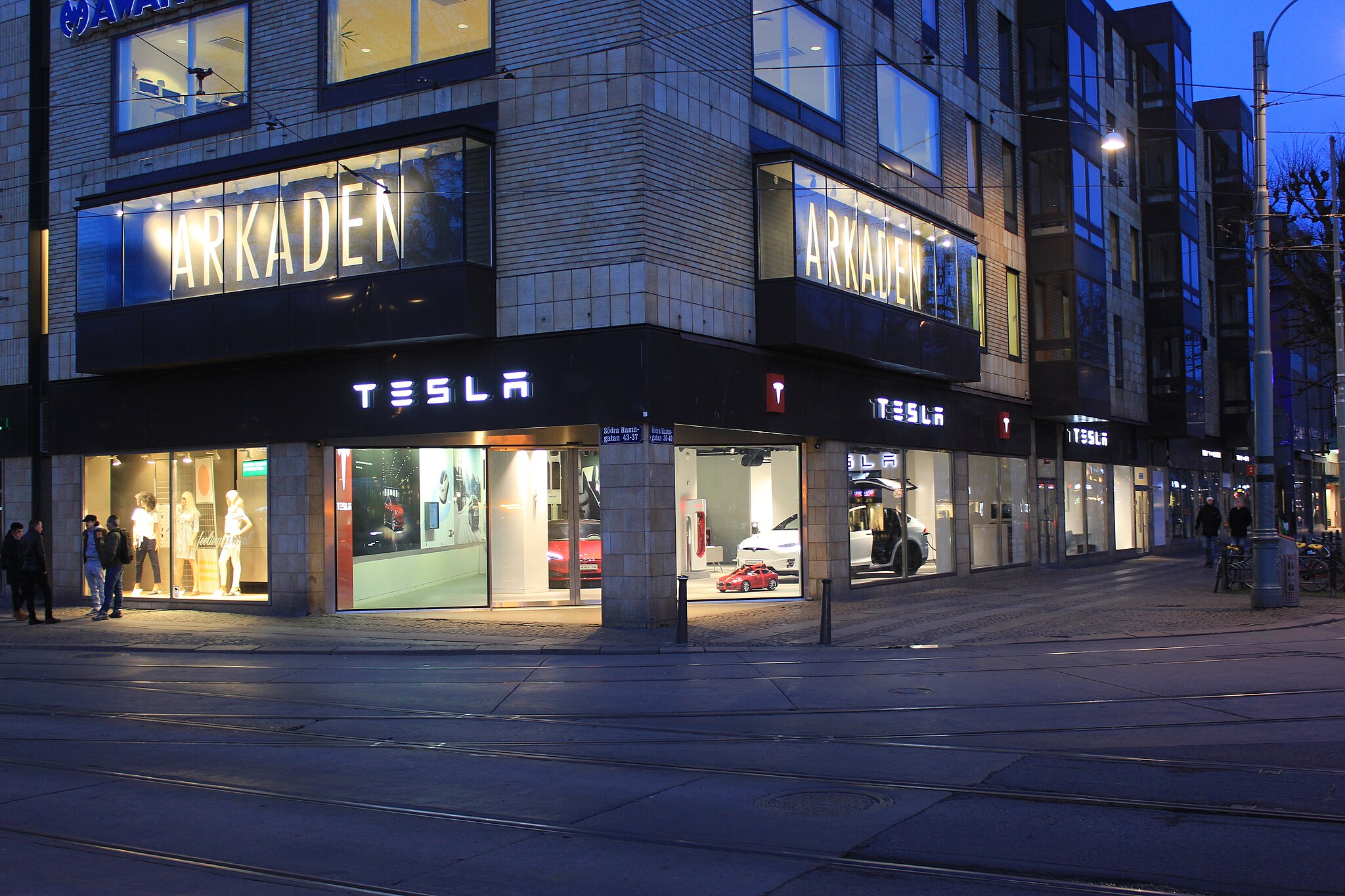
Two years into their postal blockade, Swedish unions are outraged that Tesla is still able to provide its customers’ vehicles with valid plates through various clever workarounds.
Seko chairman Gabriella Lavecchia called it “embarrassing” that the world’s largest EV maker, owned by CEO Elon Musk, refuses to simply roll over and accept the unions’ demands.
Unions shocked Tesla won’t just roll over and surrender
The postal unions’ blockade began in November 2023 when Seko and IF Metall-linked unions stopped all mail to Tesla sites to force a collective agreement. License plates for Tesla vehicles instantly became the perfect pressure point, as noted in a Dagens Arbete report.
Tesla responded by implementing initiatives to work around the blockades. A recent investigation from Arbetet revealed that Tesla Sweden is now using dozens of private residences, including one employee’s parents’ house in Trångsund and a customer-relations staffer’s home in Vårby, as a way to obtain license plates for its vehicles.
Seko chairman Gabriella Lavecchia is not pleased that Tesla Sweden is working around the unions’ efforts yet again. “It is embarrassing that one of the world’s largest car companies, owned by one of the world’s richest people, has sunk this low,” she told the outlet. “Unfortunately, it is completely frivolous that such a large company conducts business in this way.”
Two years on and plates are still being received
The Swedish Transport Agency has confirmed Tesla is still using several different workarounds to overcome the unions’ blockades.
As noted by DA, Tesla Sweden previously used different addresses to receive its license plates. At one point, the electric vehicle maker used addresses for car care shops. Tesla Sweden reportedly used this strategy in Östermalm in Stockholm, as well as in Norrköping and Gothenburg.
Another strategy that Tesla Sweden reportedly implemented involved replacement plates being ordered by private individuals when vehicles change hands from Tesla to car buyers. There have also been cases where the police have reportedly issued temporary plates to Tesla vehicles.
News
Czech Deputy excited for Tesla FSD, hints at Transport Committee review
The ANO party lawmaker shared his thoughts about FSD in a post on social media platform X.
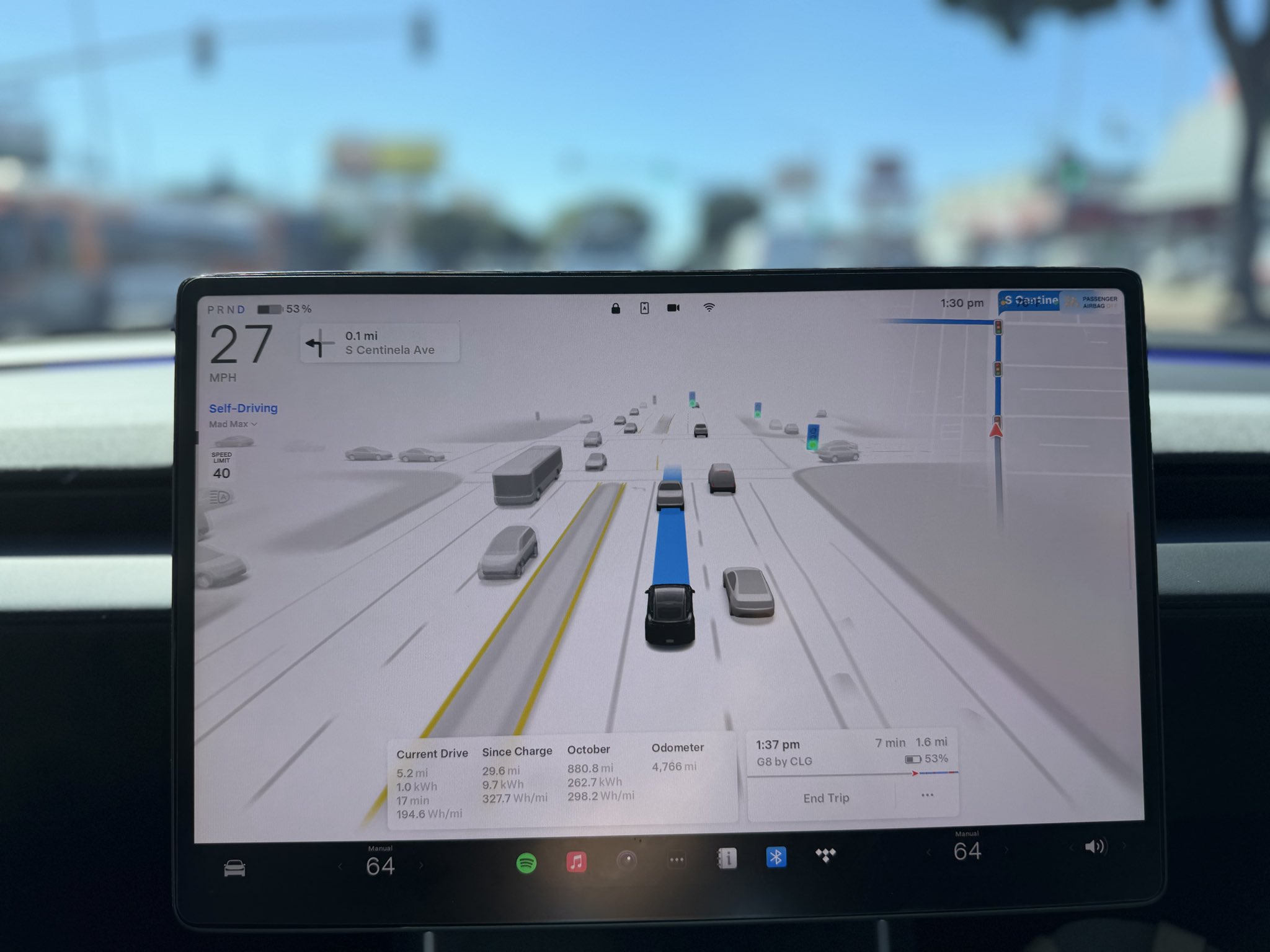
Martin Kolovratník, a Czech Republic Chamber of Deputies member, has expressed his excitement for Tesla’s Full Self-Driving (FSD) after an apparent constituent called for a quick approval for the advanced safety system.
The ANO party lawmaker, who drives both diesel and EV, shared his thoughts about the matter in a post on social media platform X.
The official’s initial statements
Kolovratník kicked off the exchange with a post outlining his coalition’s efforts to scrap highway toll exemptions for electric vehicles and plug-ins starting in 2027.
“Times have changed. Electric vehicles are no longer a fringe technology, but a full-fledged part of operations. And if someone uses the highway network, they should follow the same rules as everyone else. That’s the basis of fairness,” he wrote.
He emphasized equity over ideology, noting his personal mix of diesel and electric driving. “For this reason, there is no reason to continue favoring one technology at the expense of another… It’s not about ideology, it’s about equal conditions. That’s why we clearly agreed within the new coalition: the exemption for electric vehicles and plug-ins will end in 2027. The decision is predictable, understandable, and economically sound.”
Tesla FSD enthusiasm
The conversation pivoted to Tesla’s FSD when X user @robotinreallife, who seems to be one of the official’s constituents, replied that other matters are more important than ending highway exemptions for EVs.
“I’m happy to pay for the highway, but I have a question about a much more fundamental matter: The Netherlands will approve the operation of Tesla FSD in February 26, a technology that has been proven to reduce accidents. The Czech Republic has the option to immediately recognize this certification. Do you plan to support this step so that we don’t unnecessarily delay?” the X user asked.
Kolovratník responded promptly, sharing his own excitement for the upcoming rollout of FSD. “I know about it. I like it and it seems interesting to me. Once we set up the committees and subcommittees, we’ll open it right away in that transport one. Thanks for the tip, I’ll deliver the report,” the official noted in his reply on X.
Kolovratník’s nod to FSD hints at the system’s potentially smooth rollout to Czechia in the coming year. With the Netherlands possibly greenlighting FSD (Supervised) in early 2026, Kolovratník’s commitment could accelerate cross-border certification, boosting FSD’s foray into Europe by a notable margin.
News
Tesla Model 3 named New Zealand’s best passenger car of 2025
Tesla flipped the switch on Full Self-Driving (Supervised) in September, turning every Model 3 and Model Y into New Zealand’s most advanced production car overnight.

The refreshed Tesla Model 3 has won the DRIVEN Car Guide AA Insurance NZ Car of the Year 2025 award in the Passenger Car category, beating all traditional and electric rivals.
Judges praised the all-electric sedan’s driving dynamics, value-packed EV tech, and the game-changing addition of Full Self-Driving (Supervised) that went live in New Zealand this September.
Why the Model 3 clinched the crown
DRIVEN admitted they were late to the “Highland” party because the updated sedan arrived in New Zealand as a 2024 model, just before the new Model Y stole the headlines. Yet two things forced a re-evaluation this year.
First, experiencing the new Model Y reminded testers how many big upgrades originated in the Model 3, such as the smoother ride, quieter cabin, ventilated seats, rear touchscreen, and stalk-less minimalist interior. Second, and far more importantly, Tesla flipped the switch on Full Self-Driving (Supervised) in September, turning every Model 3 and Model Y into New Zealand’s most advanced production car overnight.
FSD changes everything for Kiwi buyers
The publication called the entry-level rear-wheel-drive version “good to drive and represents a lot of EV technology for the money,” but highlighted that FSD elevates it into another league. “Make no mistake, despite the ‘Supervised’ bit in the name that requires you to remain ready to take control, it’s autonomous and very capable in some surprisingly tricky scenarios,” the review stated.
At NZ$11,400, FSD is far from cheap, but Tesla also offers FSD (Supervised) on a $159 monthly subscription, making the tech accessible without the full upfront investment. That’s a game-changer, as it allows users to access the company’s most advanced system without forking over a huge amount of money.

